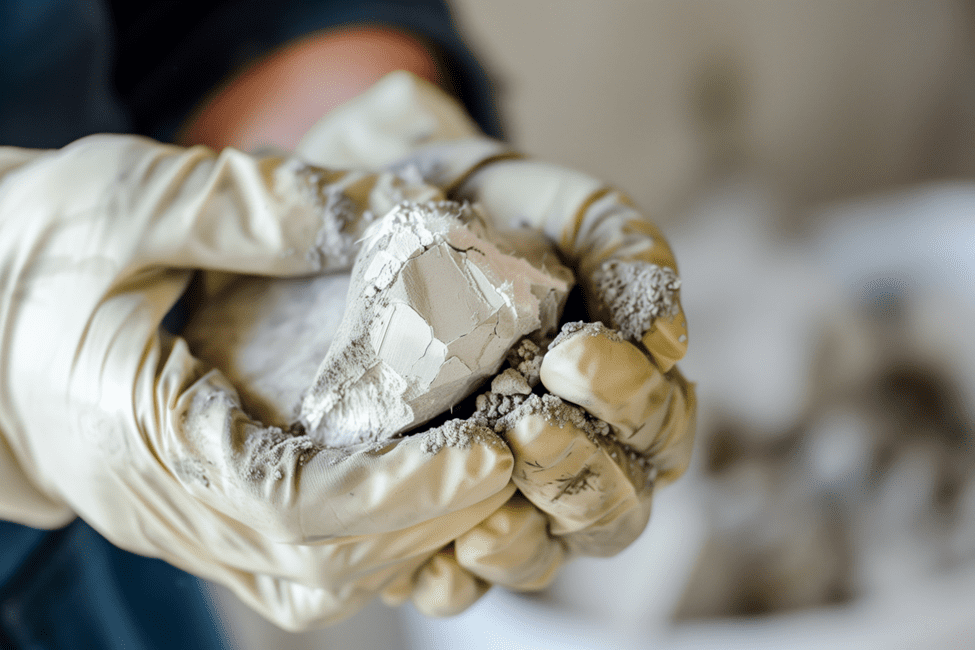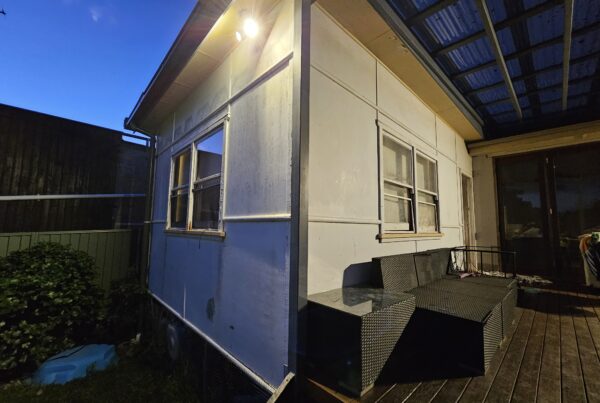Asbestos has a notorious reputation as a silent killer. People living in homes built on this material suddenly feel running out of breath and getting tired quickly, among other things. By the time they’re informed that they likely inhaled asbestos, these symptoms may have given way to more life-threatening conditions – particularly cancer.
Asbestos is able to do this because of its microscopic fibres. With sizes ranging between 0.1 and 10 microns, not only can asbestos fibres enter the body through inhaling, but they also can’t be seen or smelled. In many situations, people afflicted with asbestos-related diseases only learn the truth when the disease has reached the advanced stages.
Given this danger, proactive and thorough testing is our only means of defending against asbestos poisoning. Decades of tackling this problem have provided us with the means to test residential and commercial properties for asbestos-containing materials (ACMs) and detail the findings in a comprehensive report prior to asbestos removal in Sydney.
What is an Asbestos Inspection Survey?
Essentially, this report outlines the findings of a lab-performed asbestos test. Because our senses are incapable of spotting ACMs in a structure, it falls on state-of-the-art equipment and scientific expertise to do so.
In Australia, only a laboratory accredited by the National Association of Testing Authorities (NATA) can perform asbestos testing. An asbestos management and removal firm that offers testing services works with such labs by collecting and delivering samples taken from its clients’ buildings. It neither has the accreditation nor the necessary equipment to perform actual testing.
NATA-accredited labs adhere to at least three internationally recognised standards.
- ISO/IEC 17020 – Requirements for inspection bodies involved in the examination of asbestos containing materials and products and reporting of their findings to their clients
- ISO/IEC 17025 – Requirements for laboratories to demonstrate competence and produce scientifically valid results (also makes them compliant with ISO 9001)
- AS 4964 – Requirements for Australia-based laboratories for performing qualitative identification on bulk asbestos samples
Long story short, proper asbestos testing is almost never short on credibility. You can be confident about taking appropriate action based on the survey.
What’s in an Asbestos Inspection Survey?

For lack of a better comparison, an asbestos inspection survey reads like a mini-scientific paper – and for good reasons. A licensed asbestos removalist depends on every piece of information in the report to formulate a sound removal plan. As we’ve said many times in this blog, it doesn’t take much for asbestos waste to become life-threatening.
A report’s format and layout vary by lab. However, it generally contains the following:
Summary
Self-explanatory, a quick rundown of the survey’s contents. It contains the client’s name (relative to the asbestos removal service), site address, date of inspection, and areas where ACMs were identified through testing.
Asbestos Audit
Often formatted as a table, this part of the survey breaks down the details of each area suspected to contain asbestos. These include the type of asbestos, current condition, recommended priority for the licensed asbestos removal work and the size. The audit often comes with photos of the areas for additional reference.
Scope of Inspection
This part contains details on the asbestos inspection process done on the site, as per existing state or federal laws governing asbestos management.
Methodology
This section outlines the steps the inspecting party took, from gathering information about the building’s history to collecting samples.
Limitations
Not all asbestos risk assessment jobs involve scouring every square metre of the house or building. If the asbestos inspection carried out only involved a section of the site, the report should list the areas that weren’t assessed for suspected ACMs and the reasons for such a decision.
Conclusion
This section contains recommendations by the testing authority for dealing with the confirmed traces of asbestos, including additional notes.
Of course, the reports are far more detailed than having only a few sections. As the client will also likely have access, the reports may also include a maintenance workflow, health effects of asbestos exposure and a glossary of terms used in the survey, among others.
How Do I Get One?
The asbestos inspection survey is the end product of an asbestos test. If you request one via your asbestos removal service, you basically don’t have to do anything else after your first call to licensed asbestos removalists. There isn’t even a need for you to coordinate with the lab personally.
Asbestos removal workers will arrive on-site at your most convenient time to gather samples from suspected building materials. While it may seem simple, take note that asbestos handling entails removing a bit of the material. Without the correct power tools and techniques, collecting samples can end up releasing once-undisturbed friable asbestos on-site.
Once bagged and labelled, the samples are sent to a NATA-accredited lab. To confirm the lab’s credentials, you can ask your asbestos removal service for the lab’s name and search for it on the NSW Government website’s accredited asbestos testing laboratory finder. The results are generated from NATA’s database.
Testing is typically completed within 48 hours of receiving the samples, though some labs provide rush services where the time is cut to only 24 hours. You can expect to receive the results through email.
How Much Does It Cost?
The cost of producing the survey is already calculated into the lab’s asbestos testing fees, which can range between AUD$40 and AUD$140 in NSW. However, testing requests often follow inspections, so the total cost can be in the few hundred. Other factors that impact costs include location, date of asbestos inspection and testing and number of samples collected.






